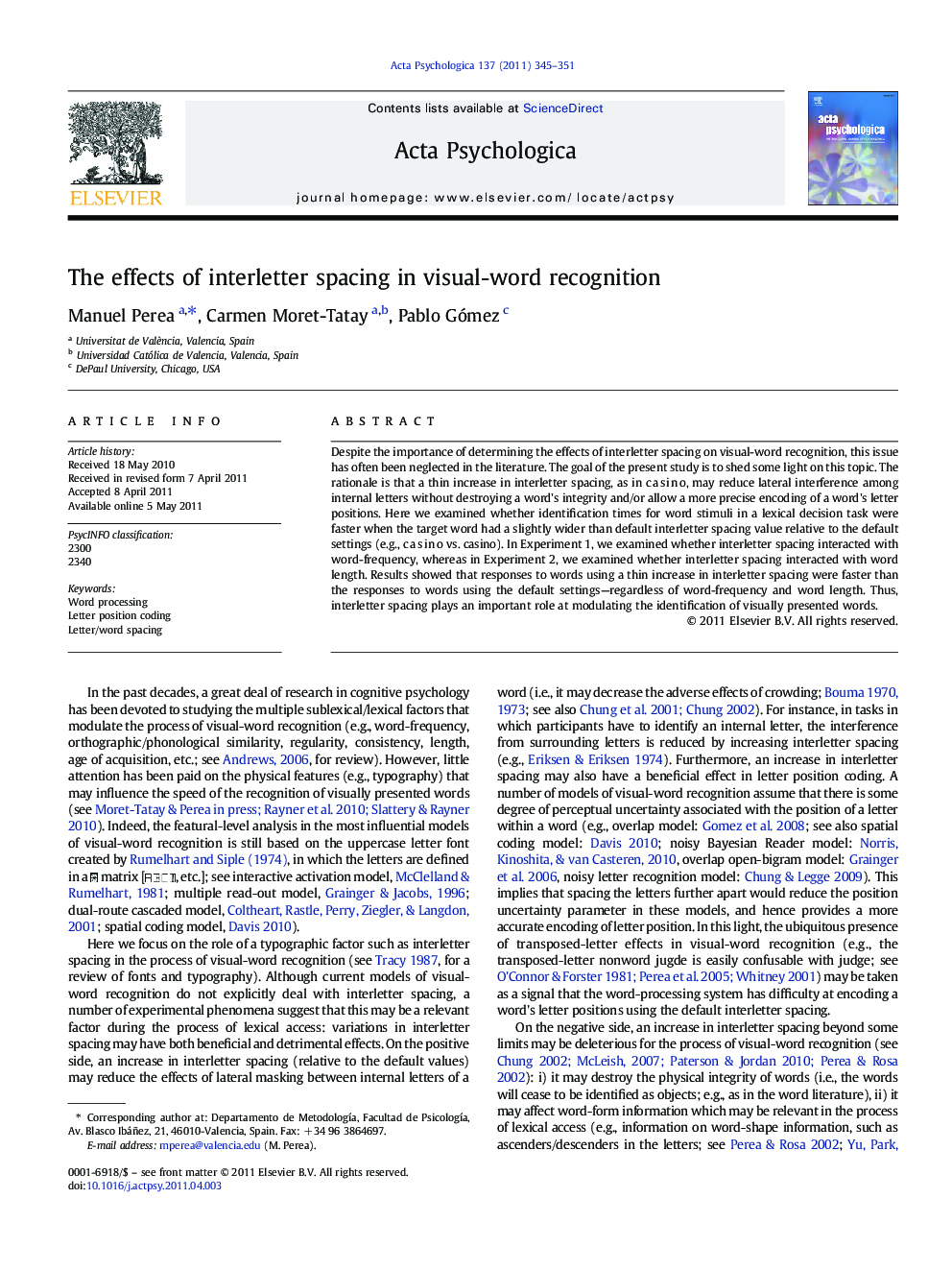| Article ID | Journal | Published Year | Pages | File Type |
|---|---|---|---|---|
| 920035 | Acta Psychologica | 2011 | 7 Pages |
Despite the importance of determining the effects of interletter spacing on visual-word recognition, this issue has often been neglected in the literature. The goal of the present study is to shed some light on this topic. The rationale is that a thin increase in interletter spacing, as in c a s i n o, may reduce lateral interference among internal letters without destroying a word's integrity and/or allow a more precise encoding of a word's letter positions. Here we examined whether identification times for word stimuli in a lexical decision task were faster when the target word had a slightly wider than default interletter spacing value relative to the default settings (e.g., c a s i n o vs. casino). In Experiment 1, we examined whether interletter spacing interacted with word-frequency, whereas in Experiment 2, we examined whether interletter spacing interacted with word length. Results showed that responses to words using a thin increase in interletter spacing were faster than the responses to words using the default settings—regardless of word-frequency and word length. Thus, interletter spacing plays an important role at modulating the identification of visually presented words.
Research highlights► We examined whether identification times for words were affected by interletter spacing. ► A thin increase in interletter spacing produced faster RTs than the default spacing. ► Interletter spacing seems to influence the "quality of information".
